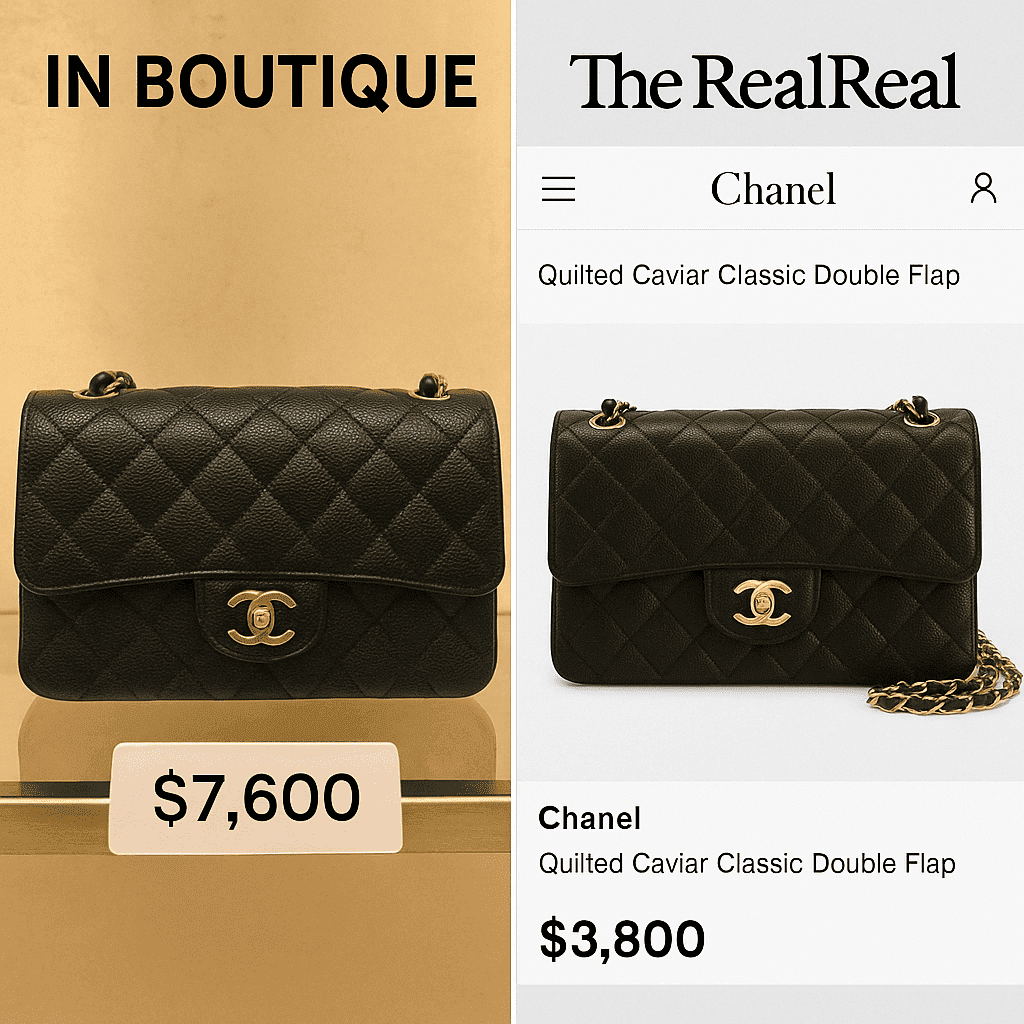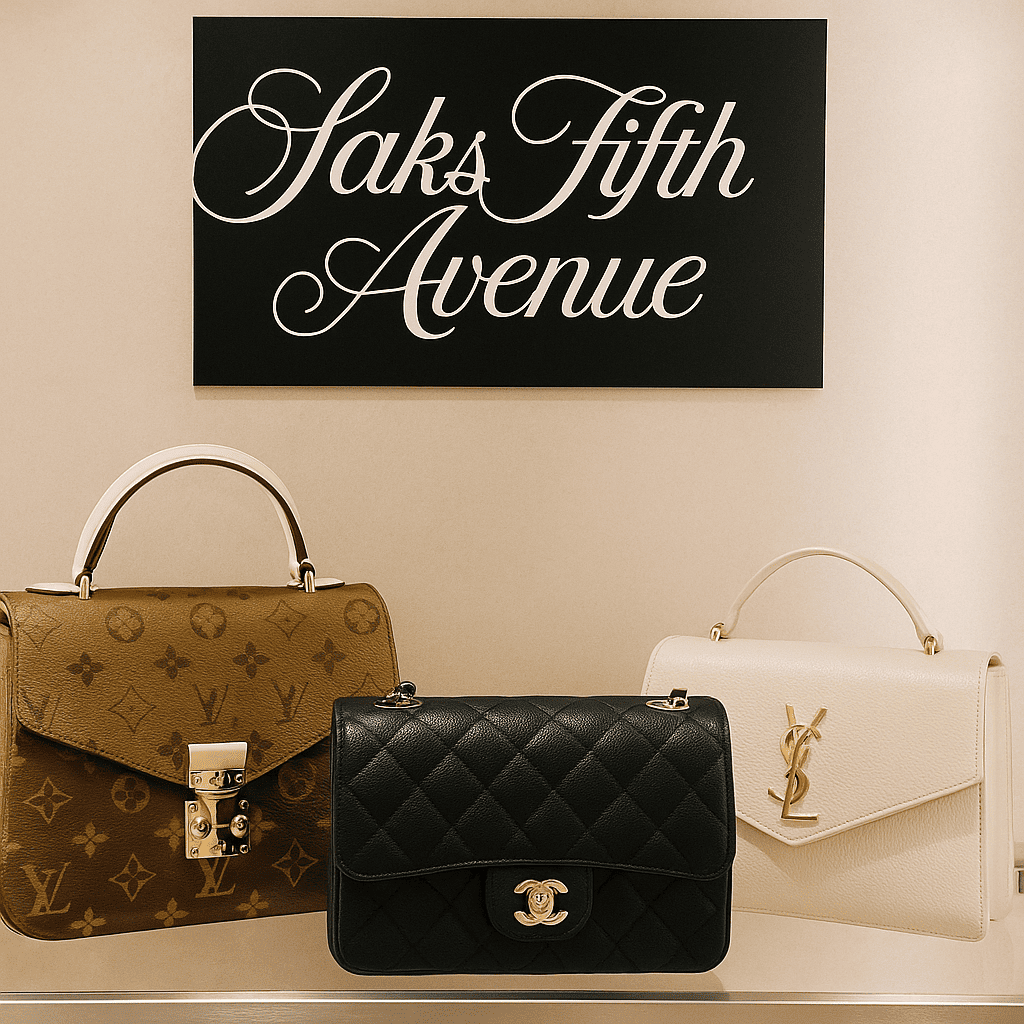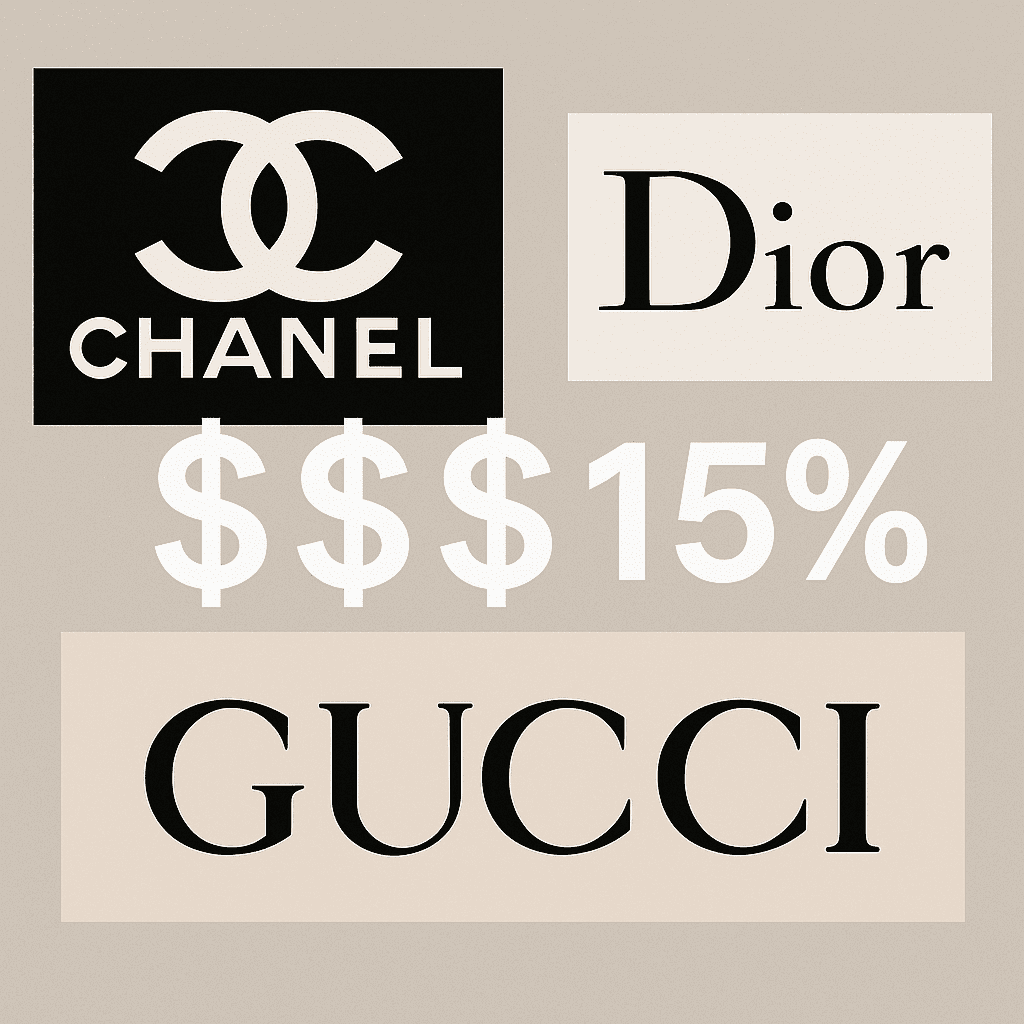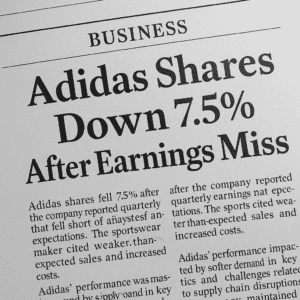Ever walked into a store, eyed a designer bag, and thought—“Wait, wasn’t this $3,000 last year?” You’re not imagining things. With the new 15% US tariffs on European luxury goods, prices are creeping up again… and not everyone’s on board.
Brands like Chanel and Louis Vuitton are juggling rising costs, customer pushback, and shrinking global demand.
And regular shoppers? They’re either holding off or turning to resale platforms like The RealReal.
I dug into what’s actually happening—from corporate strategies to real shopper reactions.
Let’s unpack how these tariffs are reshaping luxury retail in 2025—without the jargon or fluff.
Here’s what you won’t hear in a press release.
Table of Contents
8 Revealed Impacts of US Tariffs on Luxury Brands
Luxury retail isn’t collapsing, but it’s definitely shifting. And fast.
Here are 8 ways the new US tariffs is making this change happen.
1. Sticker Shock Is Real (And It’s Turning Heads)
You’ve probably noticed it—those price tags on Chanel, Dior, and Louis Vuitton keep climbing. That’s no accident. Since the U.S. slapped a 15% tariff on EU goods, luxury brands have had to make a choice:
- Absorb the cost
- Or pass it on to you
Most chose the second option.
Chanel’s classic flap bag? It tripled in price between 2015 and 2024.
Now, with the new tariff in place, UBS says brands will need to hike U.S. prices by another 2% just to break even. And it’s not just bags—expect the same across accessories, shoes, and ready-to-wear.
2. Customers Are Getting Picky (Especially the Casual Ones)
Not everyone buying luxury is a diehard collector. Plenty of people—especially younger shoppers—dip in occasionally for a treat or a milestone gift.
But now?
They’re pulling back.
Abida Taher, a physician from NYC, summed it up best:
“I’d think twice before picking something up if it’s jumped because of tariffs.”
When someone who already shops luxury is hesitating, you know it’s a signal. Brands are starting to feel the ripple effect, especially at department stores like Saks.
3. Resale Platforms Are Winning

Here’s something I didn’t expect: more people are shopping resale not because they love “sustainable fashion,” but because they don’t want to pay full price.
And honestly? I get it.
Why spend $12,000 on a Chanel bag in-store when you can get it for $8,000 on The RealReal?
That’s exactly what Precious Buckner, a clinical therapist from North Carolina, said while browsing Saks in Manhattan. She’s checking out the quality in person—then heading to resale.
It’s a smart workaround, and it’s gaining traction fast.
4. The Big Brands Are Playing Defense
LVMH (the parent company of Louis Vuitton and Dior) isn’t just waiting around. Bernard Arnault, the CEO, went full-court press on diplomacy—lobbying EU leaders and even announcing a new Louis Vuitton factory in Texas.
It’s a bold move. But for most brands, moving production to the U.S. isn’t that simple.
Luxury craftsmanship relies on decades of skill, often passed down in specific regions of France and Italy.
Rebuilding that in the U.S.? Costly. Slow. Risky.
So most labels are sticking to Europe—and eating the cost (or passing it to you).
5. Some Labels Are Out of Wiggle Room
You’d think luxury brands would have endless pricing power. But even that has a ceiling.
Between 2019 and 2023, prices jumped 33% on average across the board. That’s a lot.
Now, with US tariffs forcing another round of increases, some brands are boxed in.
Analysts say companies that overplayed their pricing hand in recent years are the ones feeling the most pain now.
And it shows in the earnings.
- LVMH missed sales targets
- Moncler dipped by 1%
- Gucci’s struggles are expected to continue
The momentum’s slowing down—and tariffs aren’t helping.
6. Hermes Took a Different Route (And It’s Working)
Not every luxury brand took the “raise prices aggressively” path.
Hermes played it cool.
While others inflated their prices during the post-pandemic boom, Hermes kept things more stable. And guess what?
They’re outperforming everyone else.
Analysts expect a 10% rise in their second-quarter sales. That’s huge when others are seeing flat or negative growth.
What does that tell us? Customers still value quality—but they also notice when prices start to feel disconnected from the product.
7. The Perception Gap Is Widening
Caroline Reyl, head of premium brands at Pictet, nailed it:
“There’s a disconnect between the prices of certain luxury items and their perceived quality or creativity.”
That right there is the crux of it.
You might be willing to splurge on a bag, but only if it feels like it’s worth it. When something jumps to $10k and looks the same as last year’s $6k version, that trust breaks down.
According to Reuters, the price hikes driven by US tariffs are throwing that balance even more off.
And when trust erodes, shoppers either pause—or pivot to resale.
8. The Industry’s in a Style Overhaul

To stay competitive and justify their new price points, luxury brands are rethinking everything—from product design to creative direction.
We’re seeing a wave of new designers at:
- Chanel
- Gucci
- Dior
- Givenchy
- Loewe
- Versace
The hope? Fresh creativity might reignite demand and close the gap between what customers pay and what they feel they’re getting.
But as one executive put it, “You can’t snap your fingers and fix this in a few weeks.”
It’ll take time—and in the meantime, shoppers are making different choices.
Real Takeaways from Real People
This isn’t just a boardroom issue. These tariffs are shaping how everyday people shop.
If you’re someone who buys luxury occasionally—or even just browses for fun—these shifts affect you too.
Here’s what we’re really seeing on the ground:
- More people walking into stores but buying online
- A growing number of shoppers relying on resale
- Casual buyers waiting for deals or price corrections
- Even loyal customers reconsidering the value
The world of luxury is being reshaped. Not by trend reports, but by how everyday people like you and me react to price tags—and what we feel is “worth it.”
Anyway, if you are a B2B business owner, you can read more on how to get more clients for you business here.



